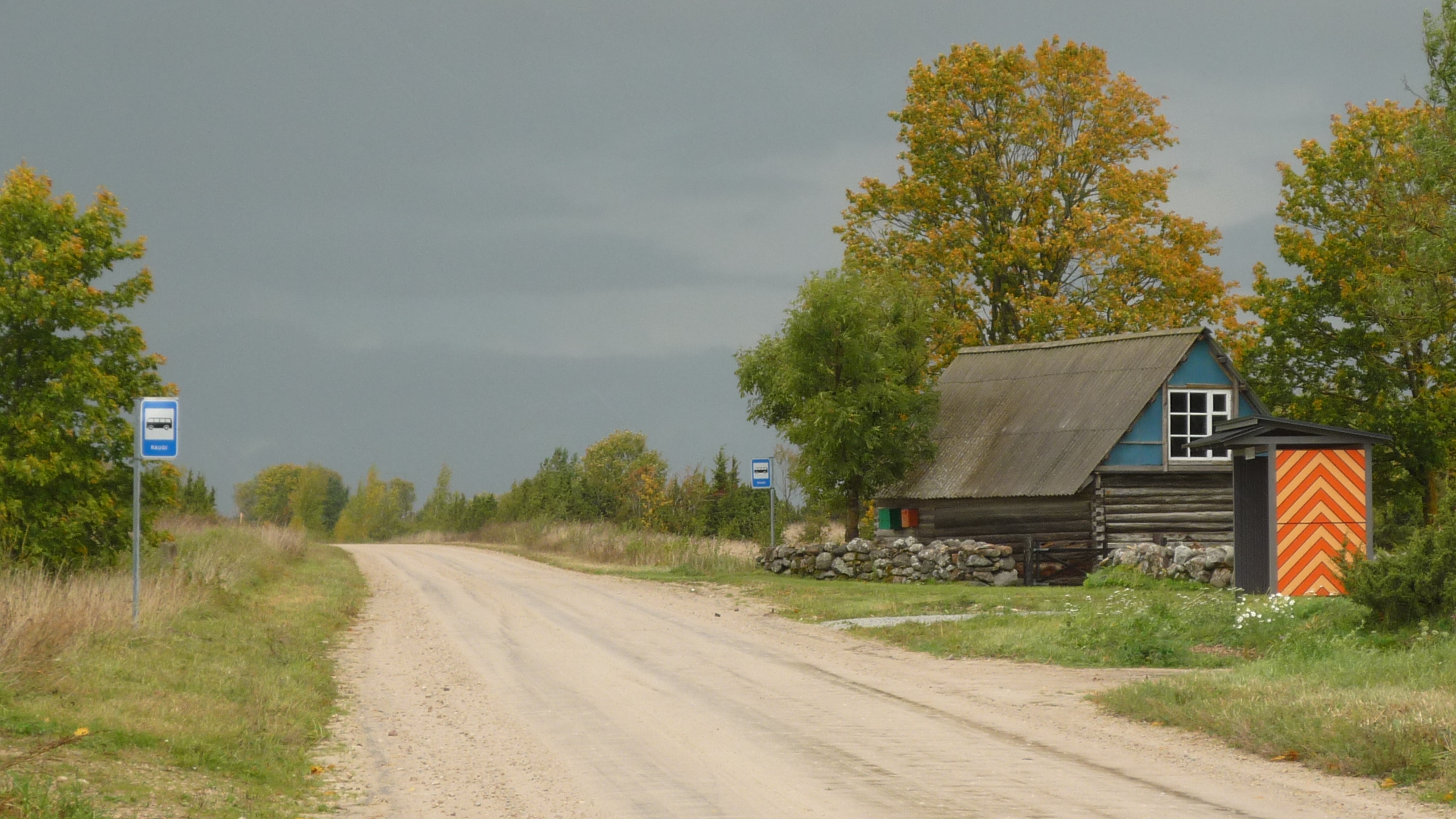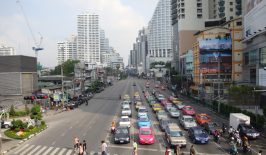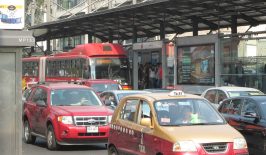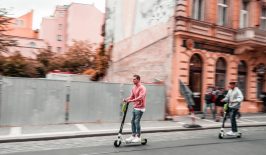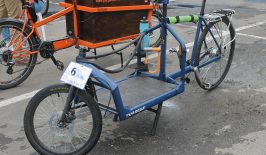Much has been written recently in environmental news about the transport revolution that’s developing in many of the world’s cities. Many urban denizens enjoy a wide range of travel alternatives to private vehicle ownership, from bus, train, tram and underground, to ride-sharing companies, bike sharing systems, shared electric mopeds and the, by now ubiquitous, pay-by-the-minute electric scooters. There are even numerous apps to help you get yourself as quickly as possible from A to B, by navigating the different transport options on offer.
However, the benefits of these transport innovations are almost entirely limited to urban areas. For people living in more rural areas, travelling without a private car is often simply impossible or just too inconvenient to be a serious consideration. In areas like those, public transport options can often be few and far between, and often still constrained to archaic and infrequent schedules and routes.
To try and tackle this imbalance, a European Union funded project has published a report outlining the challenges of rural mobility and offering some solutions. Titled SMARTA (Smart Rural Transport Areas), the report was developed by researchers and academics of the SMARTA Consortium consisting of MemEx Srl, the University of Aberdeen, Vectos, Transport & Mobility Leuven NV and European Integrated Projects. The report hopes to give policy makers and local groups the guidance needed to introduce sustainable mobility and transport infrastructure in more remote areas.
What Does the Report Say?
Throughout 2018 and 2019, the Consortium looked into the current rural transport infrastructure and policies of the 28 EU nations as well as some select other countries. This enabled them to gain a broad overview of the similarities and differences affecting various rural communities, as well as investigate projects which have been devised to introduce more mobility options in these areas. In late 2019, they began a pilot scheme in which various methods would be tested to provide more practical data into which solutions are most effective.
Broadly, their research identified three main concepts – many of which have found success in urban areas – that could be modified to work in rural regions: flexible transport services, asset sharing and ride sharing.
Flexible transport services involves making adjustments to traditional public transport services, which could include the introduction of Demand Responsive Transport (DRT) concepts, which organises routes and schedules on the basis of real-time demand. As well as generally increasing the range and coverage of public transport, the report advocates for a more flexible approach, such as providing ‘door-to-door’ or ‘near-to-near’ options. Using smaller vehicles, such as minibuses, could also help to reduce the resources required, while providing access to roads unsuitable for larger buses and coaches.
Asset sharing concerns services such as e-bike and car sharing, which are now prevalent in urban areas. Lack of profitability, as well as practical issues, has limited the use of such services in more rural areas, however the report suggests a community-led sharing programme (which is better attuned to the demands and needs of a particular town or village) could help modify this urban solution to a more rural environment.
Ride sharing involves many passengers using the same vehicle that is going to, or near, their destination. Concepts such as volunteer lift-giving and hitchhiking have fallen out of popularity in recent years due to security concerns, however the report suggests a robust registration and monitoring service could help reintroduce it. Additionally, carpooling – for example to places of work or commercial areas – is usually limited to groups of friends, colleagues or families. Digital solutions could be introduced to expand carpooling beyond immediate social circles to include a broader communities. Shared taxis, which follow a broadly re-defined route but to no fixed schedule, could be used to pick-up and drop-off passengers with convenience. Once again this service could be boosted by the use of apps and position-tracking technology.
The report also highlights various digital programmes that already been introduced in some more rural areas. Here are a few of our favourites:
Bummelbus, Luxembourg
An inhabitant of a town of village needs only to call the service from their pick-up point and arrange a time and destination within a 35-kilometer radius. They are then kept updated via SMS messages until their ride arrives. Bummelbus can be used for one-time travel, but in reality around 80 percent of journeys are regular and repeated. As such, it has become a staple of the school run, either returning children home from school, or taking them to after-school activities.
Bummelbus is run on a not-for-profit basis and is funded by the Ministry of Labour, so it’s unlikely to be seen as a viable commercial proposition. However, in the long term, Bummelbus offers a small boost to the economy by providing unemployment and training, as well as giving people access to commercial opportunities elsewhere in their neighbourhoods. The service is currently used in 255 villages in north Luxembourg and although originally devised as an aid to traditional public transport services, it has begun to replace them in some areas.
Rezo Pouce, France
Devised as a way to bring hitch-hiking into the 21st century, Rezo Pouce is a platform which utilises digital technology to provide rural travellers with quick, safe and cheap transportation. Furthermore, although hitchhiking usually conjures up images of backpack-laden youngsters on an international adventure, Rezo Pouce aims to normalise hitchhiking as something locals of all ages can engage in.
Users of the platform – whether they be drivers or travellers – need to provide a photo ID and ratify a charter of good behaviour before they can use the service. They are then also provided with a smart card, vehicle stickers and a list of ideal hitch-hiking pick-up locations. Then, very much like taking an Uber, a hitch-hiker searches for a ride. If a Rezo Pouce driver is in the vicinity and heading in their direction, they will receive a notification and both users are connected.
On average, a Rezo Pouce hitch-hiker waits around 5 to 10 minutes for a ride, making it comparable in waiting times for public transport. As well as making good use of empty space in cars which are already out on the roads, the platform also hopes can provide a heightened sense of security to both drivers and travellers, once again making hitch-hiking a viable method of getting around.
Currently, Rezo Pounce has 3,043 stops in 1,305 municipalities and covers around 20 percent of rural France.
Texelhopper, Netherlands
The island of Texel, located amongst the Dutch Wadden Islands, is served by only a single bus line – the Number 28. Although it drives to much of the main areas of the island, it is still restricted to a traditional timetable and route. For those looking to head elsewhere and in convenience, they can refer to Texelhopper.
Using the platform, Texelhopper travellers can book a minibus no later than 30 minutes prior to departure from one of the 130 bus stops on the island. Although some are physical stops, others are ‘virtual stops’ that exist only within the app, but which are also served by the Texelhopper buses. Within 15 minutes, a minibus will arrive which can take travellers to any particular point they desire.
Texelhopper is designed a hybrid-solution that works in tandem with the main public transport infrastructure, but which provides locals with the flexibility they need to gain access to the more remote areas. As such, it is a paid service with payment being handled entirely through the app.
The provision of quality public services, such as transportation, are key to the future development and social and ecological sustainability of rural areas. And while cities continue to innovate and extend their transport solutions, rural areas’ demand for flexible and sustainable travel options – that don’t involve having to own a vehicle – simply isn’t being met right now. Hopefully, the SMARTA report can help encourage the adoption of more sustainable transport solutions which not only help the environment, but also help create a new sense of community and connection within rural towns and villages.
